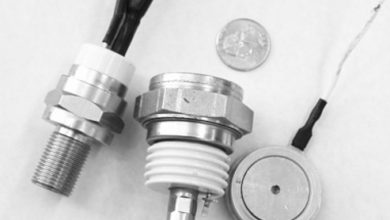List of Best Mechanical Flow Measurement Devices

Mechanical flow measurement devices are usually essential in the process industries to measure fluid flow properties, such as volumetric flow rate, mass flow rate, density, and viscosity. They can also be effective on the fluids measurement, liquid, or gases. This article will list any flow meter essential for your application. The devices are found in many different applications.
The list of devices includes:
Oval Gear Meter
It is a gear-type flow meter that uses two rotating gears to measure the volume of flowing fluid. The oval gear meter is famous for its low-pressure loss and good accuracy at high flow rates.
The arrangement of the gears enhances the formation of the two sections in the flow meter, which helps in increasing the accuracy of measurement. The oval gear meter is used for various applications such as gas and water flow measurement, especially at high rates.
One can monitor the number of gear rotations to determine the flow rate and the volume of the fluid passing through the meter. The oval gear meter has a high accuracy of measurement at low-flow rates, and it also can measure the flow rate in either direction.
Piston Flow Meter
It operates on the principle of actual physical volume flow measurement. It is a popular device for high-pressure applications, such as oil and gas, chemical plants, refineries, etc.
The piston flow meter works by measuring changes in weight or pressure due to bulk fluid flowing through it. The primary components include an adjustable collar attached to a pipe with a valve at the end. Piston flow meters are essential in measuring domestic water use, industrial water use, airflow measurement, and gas flow.
Its application is not limited to industry; it can be used for various applications such as in pumping stations, pressure washers, etc. An important aspect related to the installation of piston meters is that they are installed at a point that has no restriction on the fluid direction hence allowing unrestricted flow.
The meter must be calibrated for the fluids that are to be measured. The piston flow meter is a volumetric flowmeter and cannot measure mass flow rates.
Variable Area Meter/Rotameter
It has a vertical tapered glass tube, and there is a float inside the tube. The float moves up and down the tube as the fluid volume changes.
A variable area meter is used for on-off control of flow, i.e., it starts operating when a certain level of liquid has to be attained to start pumping out that particular load/volume or vice versa. It can also help shut off an operation when the liquid level is attained.
The main advantage of a variable area meter over other mechanical flow devices is its ability to measure high-pressure situations without any risk or damage to the device itself, thanks to its use of air in place of liquids.
The only drawback of this device is that it cannot be used for low-pressure applications because of the low-pressure differential. It is a volumetric flow measurement device used for liquids and gasses.
Turbine flow meters
These flow meters can measure a variety of fluids such as water, steam, gases, etc. They can measure both volumetric flow and mass flow rates with reasonable accuracy.
The turbine meter works on the principle that when fluid passes through it, the frictional losses inside it change the turbine’s pitch (angle) / rotational speed (rpm). This pitch/rotational speed is then used to determine the flow rate and volume of fluid passing through it.
Conclusion
The four fluids measurement devices described above are the most popular and commonly used mechanical flow measurement devices. They have a wide range of applications and can be used for liquids and gasses. While each device has its advantages and disadvantages, they all provide a reliable method for measuring fluid flow rates.




